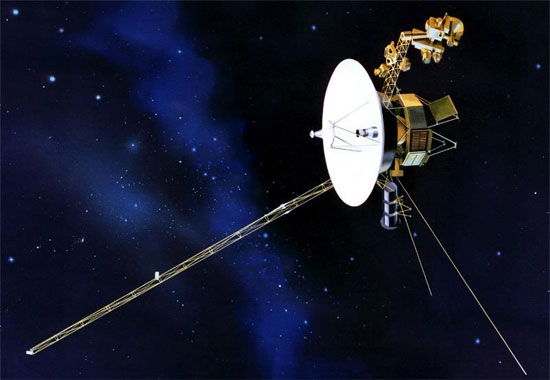Voyager's controversy
The US Air and Space Flight Voyager (NASA) has entered the interplanetary space last year, becoming the first artificial object to leave the solar system, but this conclusion is still controversial. controversy among experts.
>>>NASA Voyager 1 spacecraft comes to the edge of the solar system
Scientists have long been anxious to wait for the Voyager to send a signal to detect the magnetic field moving in the opposite direction from the solar system's magnetic field.
However, recent research results show that the scenario is not accurate.

Voyager 1 and twin sisters continue their long journey over the past 36 years - (Photo: spacetoday.org)
'We think that the magnetic field inside the solar system and the interplanetary space are aligned so that the spacecraft can actually cross the boundary without feeling a big change in direction , ' said Reuters. from physicist Marc Swisdak of the University of Maryland (USA).
This means that the Voyager actually entered the interplanetary space last summer after it detected an unexpected drop in charge particles derived from the sun's direction, and a similar increase. Cosmic rays come from space outside the solar system, reported in The Astrophysical Journal Letters.
However, not everyone is convinced that Voyager actually made a miracle, becoming the first spacecraft to cross the boundaries of the solar system.
The leader of the Voyager Edward Stone mission, now retired, said the Swisdak group's research results are interesting, but other computer models provide completely different perspectives when interpreting the data. Voyager.
Mr. Stone and other scientists believe that Voyager is in an area not known, called the 'highway from', located between the heliosphere and the interplanetary space.
Voyager 1 and Voyager 2 were in turn launched in 1977 to serve the mission of studying the outer planets of the solar system.
Voyager 1 is now 120 times the distance from the sun - Earth, while Voyager 2 is moving in the other direction to exit the solar system.
- Science has proven: The more the pair quarrels, the happier they are?
- Controversy over new health studies
- Controversy around Cao Cao's tomb
- Controversy about the safety of electronic cigarettes
- Controversy about the future of sex robots
- Controversy about the contraceptive effect of genetically modified corn
- Swedish scientists controversy when editing genes in human embryos
- Controversy about experiments reveals the formation of the universe
- Controversy about plants that cause lung cancer
- 'Linux violates Microsoft's copyright'
- Controversy 'unique' about Evolutionary theory
- Controversy over the name
 Van Allen's belt and evidence that the Apollo 11 mission to the Moon was myth
Van Allen's belt and evidence that the Apollo 11 mission to the Moon was myth The levels of civilization in the universe (Kardashev scale)
The levels of civilization in the universe (Kardashev scale) Today Mars, the sun and the Earth are aligned
Today Mars, the sun and the Earth are aligned The Amazon owner announced a secret plan to build a space base for thousands of people
The Amazon owner announced a secret plan to build a space base for thousands of people